| Umělec magazine 2006/3 >> Word Slingers United | List of all editions. | ||||||||||||
|
|||||||||||||
Word Slingers UnitedUmělec magazine 2006/301.03.2006 Tony Ozuna | text and art | en cs de |
|||||||||||||
|
There is always a feeling of disappointment, a let down as if I’ve been cheated, when art works are untitled. This is because, at least for me, a reference point has been eliminated.
Just for example, the recent retrospective of the photographer Miroslav Tichý at Brno’s House of Art, where almost all of the works were untitled. Understandably in his case, how can an 80-year old man possibly go back and name images from countless stacks of long neglected, corroded photographs from his dirty floor, most made over 30 years ago. But then especially at that show, I wanted to know the stories or (at least) first names to connect all those blurred faces and bras and crotches. Of course, Tichý’s recently “discovered” work may be more successful precisely since it lacks this information. Without titles, the images of Kyjov that he captured on film have become all the more mythical—mostly just legs and bodies of daughters and wives immortalized in a blur. Thus an artist may also have a reason to leave captions out altogether, because they do overtly influence how we interpret works. So much that even if a work is a full attention grabber (particularly in a group show), I will still glance at the title and name of the artist first for orientation. And in the other extreme, if the work (painting, photo, found object, whatever) is banal, art students are certainly taught in schools that she or he can save it (save their ass) by giving the piece a title and caption with a humorous twist. Words on a painting or sculpture are another matter. More than in captions, the words in these cases establish a clearer dialogue between the artist and the viewer. Beginning with John Baldessari with his humorous and provocative statements on not very interesting paintings. In general, when artists choose to use to text, there has been a tendency to simplify the medium to highlight the words. A weak choice of words, on the other hand, irregardless of the image just leaves the poor viewer to think, in the wise words of the late French painter and writer Henri Michaux, from his book of poetic prose musings Tent Posts: “Communicate? You too would like to communicate? Communicate what? Your backfill?—the same mistake over and over again. All of your backfill heaped on itself? You’re not yet intimate enough with you, poor fool, to have something to communicate.” And unfortunately much text-based conceptual art deserves this rebuke, by Michaux. Though Jiri Kovanda is considered the leader of contemporary Czech conceptual (text-based) art, he is a minimalist, practically a mute compared to someone like Jiri Kolar, who simply had too much to communicate. Kolar was a poet at heart who decided to subvert his words on an intellectual dare, on pure philosophical principle. And too bad, when he was writing potent verse at the end of the 60s right up to the point when he chose to convolute and disintegrate his words to the effect of poetic imagery only. “Take the pictures off the wall roll back the carpets gather the furniture into the middle of the room cover it in wrapping paper like before decorating stand in the corner with your face to the wall and stay there for as long as you can.” “Face to the Wall,” from the collection of poems by Kolar, Instructions for Use. Very few artists ever produce texts as visually powerful as this; however, Slovak Boris Ondreicka recently raised the standard with his text written (in English) on the wall of Futura gallery in Prague for the exhibit I act 2 curated by Vit Havranek. Ondreicka’s contribution is in the first room of the show, titled “Scheissliche Ostblocker.” It is the best contemporary prose-poem/art piece I’ve come across in a long time. Another exceptional work at the I act 2 was by Pavel Braila, of Moldavia. In his four minute video piece “Recalling Events” Braila lies on a large black chalkboard, writing in white chalk. He writes dates and words, points in a life that may or may not be his own. Some texts are incomprehensible, but no matter because after writing anything, he immediately erases it with his hands, arms, legs, sides of his face, all of his body moving around in a twisted circular motion. Artists with not only twisted bodies, but twisted minds finally make the best usage of image and words. Raymond Pettibon realized the power of this dichotomy early on when he put his stark drawings with usually unrelated texts he writes, or more likely quotes by writers like Henry James, William Blake or infamous mass-killers like Charles Manson onto flyers for punk concerts with Black Flag, Circle Jerks, and others playing the Los Angeles hardcore punk scene in the late 70s and early 80s. The non-trendy punk movement of that time was about a ferocity of sound and a shout, and Pettibon’s most recent-ongoing series of a squat, cartoon-figure boy with a volcanic mouth, shouting “Va-voom” not only encapsulates these two elements from that long gone era, better than ever, it takes on all the enemies of this world with a powerful blast--an external scream—to fortify all of humanity against all of life’s nonsense, today. Little Va-voom is a kind of inchoate poet for our times, and most appropriately so, because over the edge of this point that Pettibon traverses so finely, there are only the outsiders. Among the best naïve or outside artists uncovered recently on the Czech scene is Zdenek Kosek, who was part of the exhaustive Art Brut exhibit, curated by Terezie Zemankova and Barbora Šafářova, at the House of the Stone Bell in Prague and Gallery Stepanska at the French Institute in Prague this summer. Kosek is a mad twin (the antithesis) of Jiri Kolar; he is a philosopher-prince and cartographer run amok, who doodles, scribbles and scratches in notebooks, on his own maps and his own diagrams. Inspired by his own fantastical world, seething in sexuality, he also creates collages and small drawings then marks them up; his ink pen journeys on women’s bodies, which he finds from hard-core pornography magazines both decorate and defile. Kosek cherishes his concepts and the text as much as any artist-writer, but his self-styled graffiti on paper is unfortunately beyond our comprehension—all voices and no words. 1062
01.03.2006
Recommended articles
|
|||||||||||||
|
04.02.2020 10:17
Letošní 50. ročník Art Basel přilákal celkem 93 000 návštěvníků a sběratelů z 80 zemí světa. 290 prémiových galerií představilo umělecká díla od počátku 20. století až po současnost. Hlavní sektor přehlídky, tradičně v prvním patře výstavního prostoru, představil 232 předních galerií z celého světa nabízející umění nejvyšší kvality. Veletrh ukázal vzestupný trend prodeje prostřednictvím galerií jak soukromým sbírkám, tak i institucím. Kromě hlavního veletrhu stály za návštěvu i ty přidružené: Volta, Liste a Photo Basel, k tomu doprovodné programy a výstavy v místních institucích, které kvalitou daleko přesahují hranice města tj. Kunsthalle Basel, Kunstmuseum, Tinguely muzeum nebo Fondation Beyeler.
|








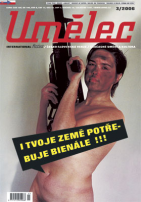















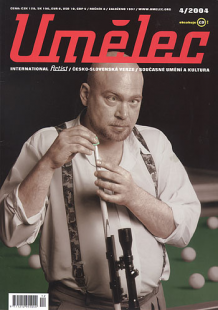




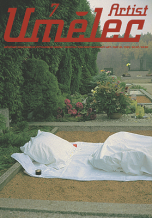
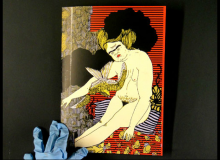

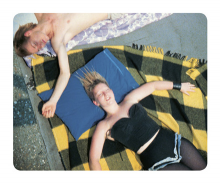


 New book by I.M.Jirous in English at our online bookshop.
New book by I.M.Jirous in English at our online bookshop.
Comments
There are currently no comments.Add new comment